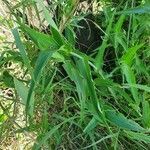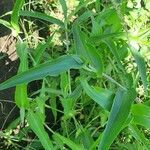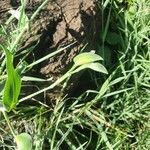It is a creeping herb. It grows 50-80 cm tall. The stems are succulent. The plant roots at the nodes. The leaves are narrowly oval. They clasp the stems at its base. The flowers are mauve-blue.
Leaves lanceolate-attenuate, dark green, more or less amplexicaul, glabrous or only slightly pubescent, leaf-sheaths glabrous to only slightly pubescent outside
Prostrate or straggling herb with stems sometimes up to 6 ft. long
Blue flowers open from 9-11 a.m.




